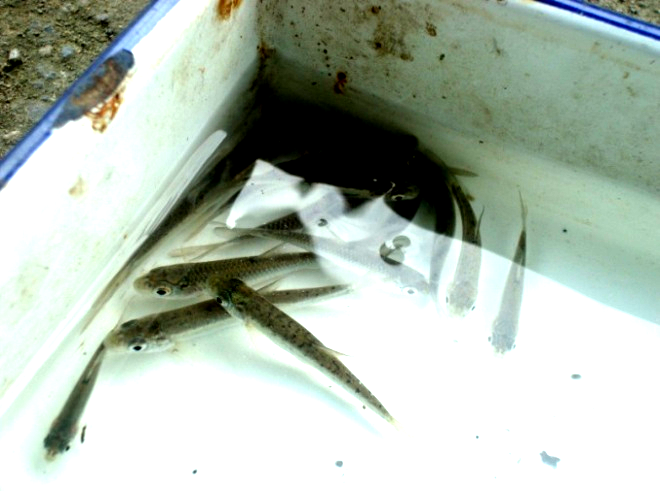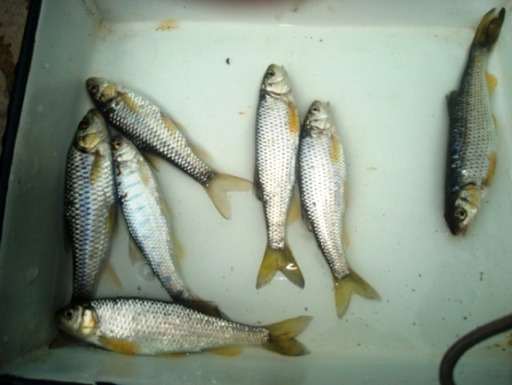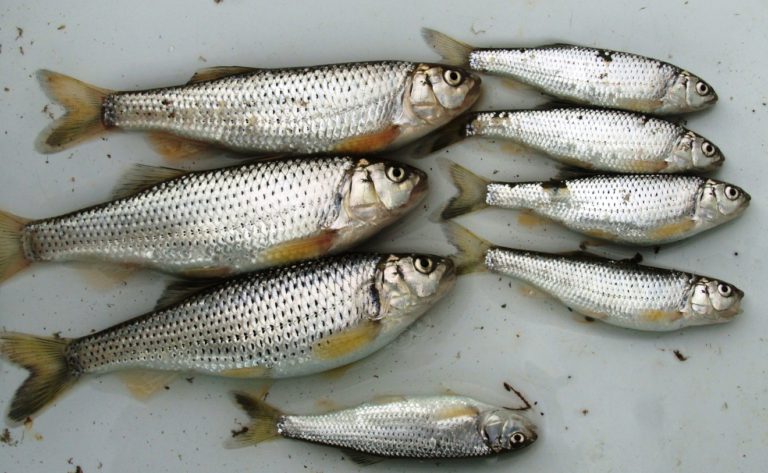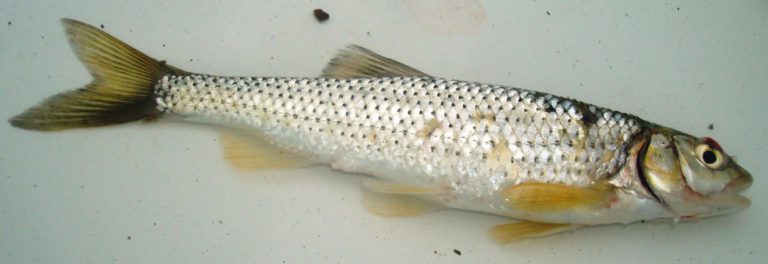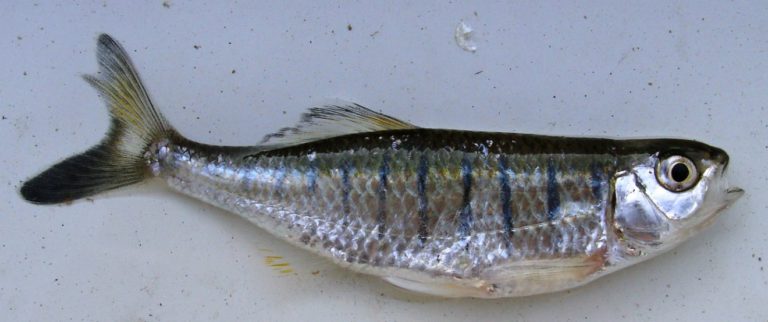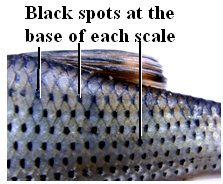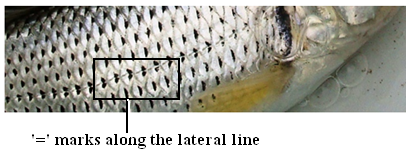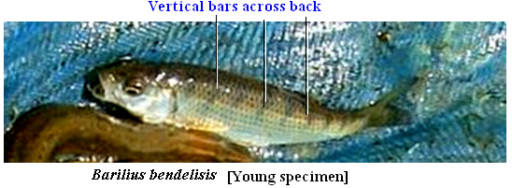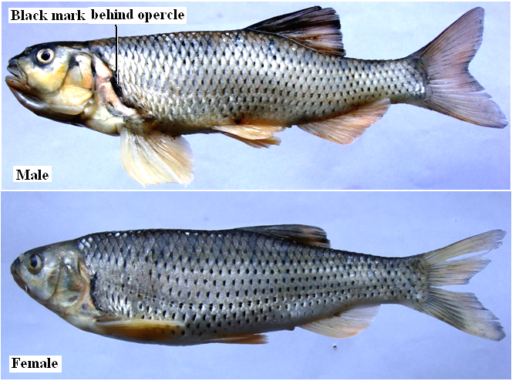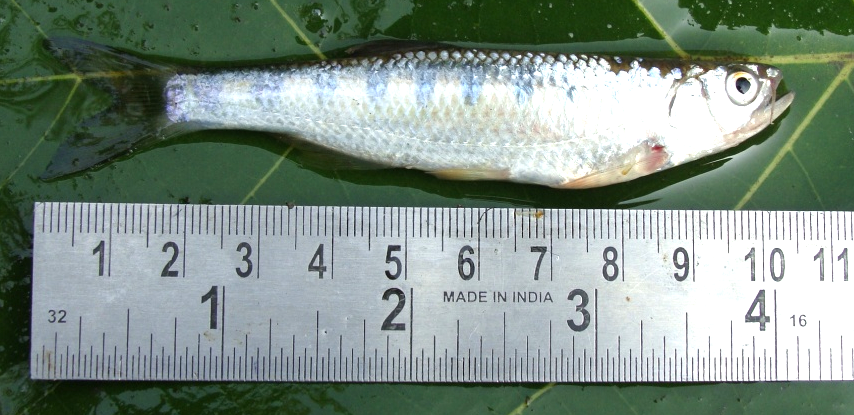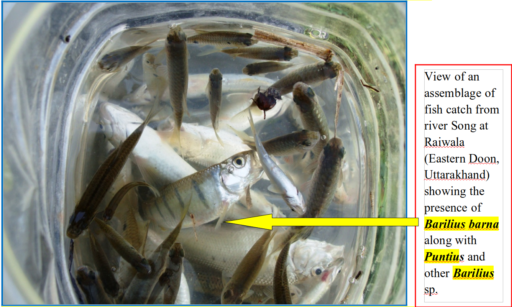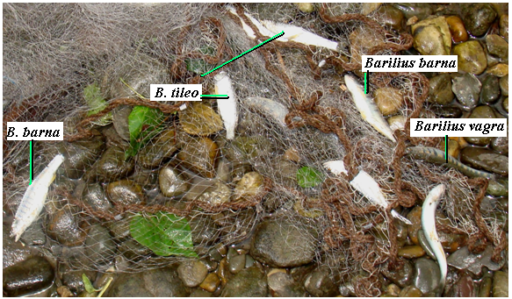…..All the specimens in this lot belong to Genus Barilius , represented by at least 3 common species viz., Barilius bendelisis > B. vagra, and > B. barna, in order of abundance.
All of them are most common in the hauls made from the hilly, clean watered, slow to fast running stretched with sandy or pebbly bed both in the eastern and western Doon.
Live specimens of Barilius sp. Mark the presence of Barilius vagra and Barilius bendelisis in the glass jar.
CHARACTERIZATION OF 3 Barilius sp.:
The 3 species of this lot can be segregated on the basis of following characterizations:
- 2 Pairs of barbels:
(a) Barbels shorter than eye diameter, maxillary longer than the rostral. Silvery, with a black spot at the base of each scale and double rows (‘=’) along the lateral line. Younger individuals have faint 8 – 9 vertical blue-black bars (bands) across the back. Opercles shot with gold and often there is a black streak like mark just behind the gill opening (touching the margin of operculum). Fins yellow. Pectorals, pelvics and anal tinged orange. The posterior edge of lower lobe of caudal fin edged black.
……..Barilius bendelisis (Indian Hill Trout)
Barilius bendelisis: Lateral view of a male and a female
More photos of Barilius bendelisis
Barilius bendelisis : Males showing pearl organs and thickened pectoral fin rays. Head of female enlarged to show less of pearl organs on the pointed snout.
(b) Body relatively slender. Lower jaw slightly longer. Rostral barbels quite long (nearly half as long as head) whereas the maxillary shorter. Silvery with a band of coppery hue from behind the upper edge of opercles to the base of caudal, disrupted intermittently by 9 – 10 royal bluish vertical bands on the sides. Fins yellowish, posterior edge of the caudal greyish.
This is the second most dominant species from Doon valley, found at about 300 – 600 m above msl.
…….Barilius vagra
Barilius vagra: Lateral view. Mark Silvery body with a band of coppery hue from behind the upper edge of opercles to the base of caudal, disrupted intermittently by 9 – 10 royal bluish vertical bands on the sides. Fins yellowish, posterior edge of the caudal greyish.
More photographs of Barilius vagra
A panoramic view of upstream section river Song at Maldevta (its tributary Bandal; Eastern Doon, Uttarakhand) during April-May months when the water level is reduced to few centimeters in some sections. The Fishes seen jumping / leaping out of water were identified as a large shoal of Barilius vagra and young individuals of Barilius bendelisis. Obviously, the leaping activity (an activity of restlessness) was due to heating up of water with reduced oxygen level.
……..Barilius barna
HABITATS PREFERRED BY Barilius sp.
(Expand/Collapse each section by clicking on (+-) symbols to view the details…
River Song (Doon Valley): Upstream section at Doiwala, a favorite dwelling site for Barilius sp. along with others like Channa, Amblyceps, Glyptothorax, Garra, Tor sp.etc.
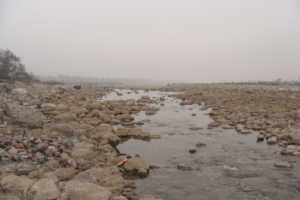
River Song (Doon Valley): Upstream section at Gumaniwala (close to Rishikesh), a favourite dwelling site for Barilius sp. along with others like Puntius, Rasbora, Esomus, Devario, Danio, Channa, Clarias etc.

River Song (Doon Valley): Downstream section below a road bridge at Doiwala, a site where Barilius vagra and B. barna can be found in numbers along with Esomus, Rasbora, Devario, Puntius,Channa sp. etc.
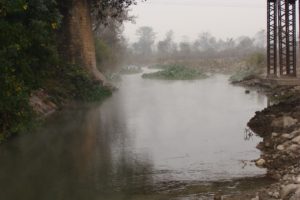
River Song (Doon Valley): Downstream section at Raiwala (flowing towards Ganges), a favourite dwelling ground for Barilius bendelisis along with others like Tor, Labeo, Garra, Glyptothorax, Xenentodon sp. etc.
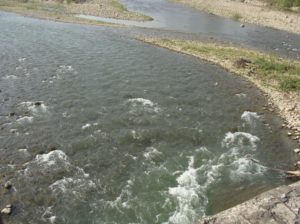
Suswa River: A section of the river flowing through Raja ji National Park (close to Motichoor Forest), a favourite dwelling site for Barilius sp. along with others like Chagunius, Tor, Labeo, Mastacembelus sp. etc.
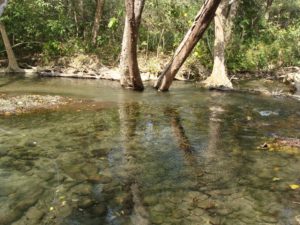
Asan River: Western Doon (Dehradun district), close to Herbertpur, good dwelling site for Barilius bendelisis, along with Xenentodon cancila (Lot 2) and Puntius (Lot 1) sp.

Asan River: Western Doon (Dehradun district), close to Herbertpur; a stretch upstream of Asan Barrage (Dhalipur Lake) about 11 km from Dakpathar and 28 km Northwest of Dehradun (Uttarakhand). It is a Bird Watchers’ paradise, thronging from the length and breadth of India to watch migratory birds from Eurasia, specially Brahminy Duck or Ruddy Shelduck (Tadorna ferruginea), most popular as ‘Surkhab’ in Hindi.

Asan River: Western Doon (Dehradun district), close to Herbertpur; a stretch upstream of Asan Barrage Bird Sanctury (= Dhalipur Lake), showing a flock of winter visitor, a bright orange-brown duck, the Brahminy Duck or Ruddy Shelduck (Tadorna ferruginea), most popular as ‘Surkhab’ in Hindi.

Asan River: Western Doon (Dehradun district), close to Herbertpur; a stretch upstream of Asan Barrage Bird Sanctury (= Dhalipur Lake), showing a huge swimming flock of the Brahminy Duck or Ruddy Shelduck (Tadorna ferruginea), most popular as ‘Surkhab’ in Hindi.
- Systematic position:
Family: Cyprinidae
Subfamily:
Rasborinae(= Danioninae)
- Barilius vagra, B. barna and youngs of B. bendelisis have ornamental value under a congenial temperature regime of hilly environment.
- All in combination of three are common in Eastern Doon (Song and Suswa River) than in western Doon where B. bendelisis is dominant.
Compilation by Dr. SK Gupta.
Instant Identification of Indian Freshwater Fish in the Field


